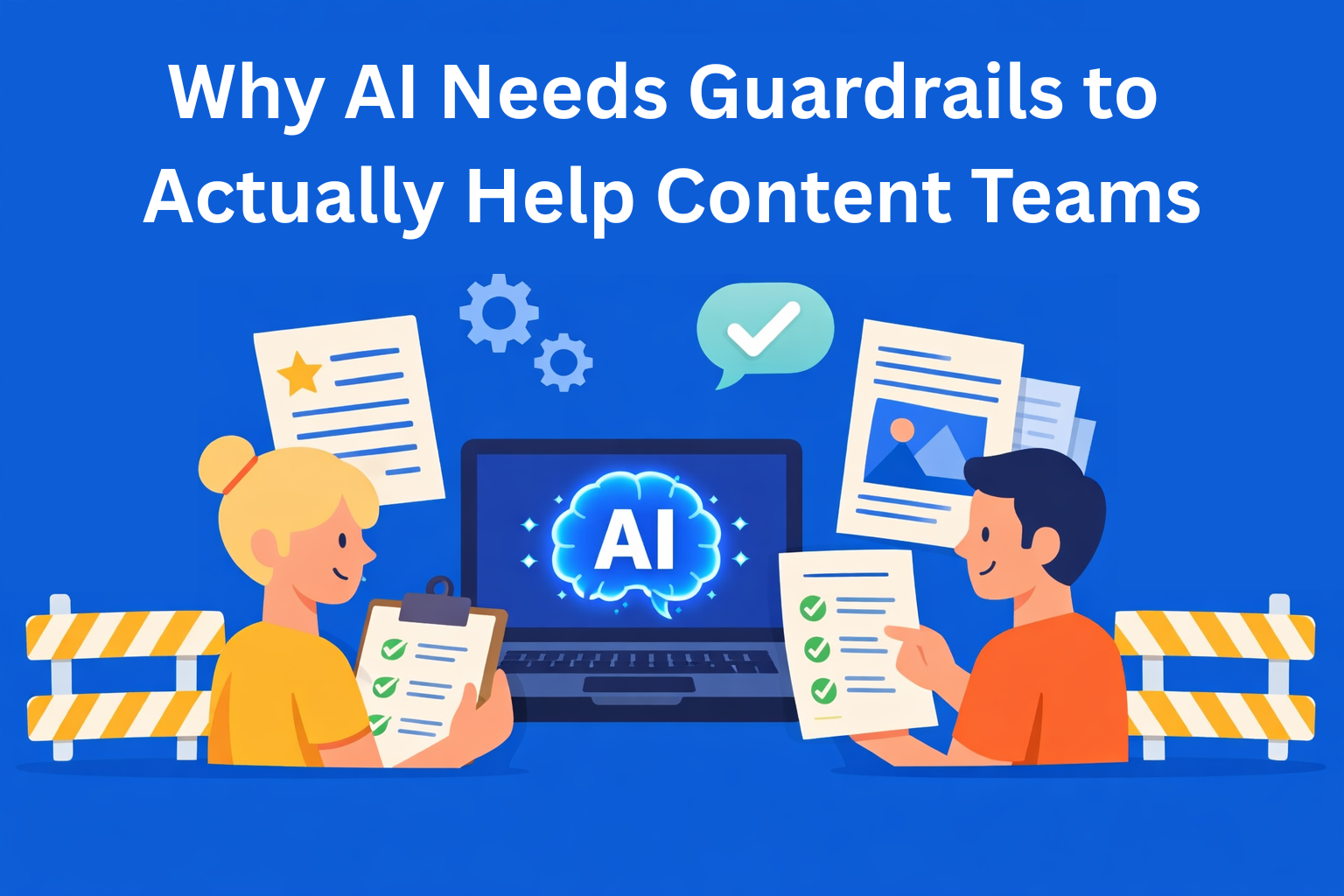AI Content Detectors: Can They Spot AI-Written Text (and Why It Matters)
AI is increasingly shaping the world of writing, making it harder to tell what’s written by a human and what’s generated by AI. That’s why AI detectors exist, they’re useful, but not perfect. Real value comes from using them alongside human review and a healthy dose of common sense.

AI constantly continues to change the way we create content, more and more often the question arises, can we recognize content written by a human, from that written by AI?
Tools like ChatGPT, Jasper, and other AI writing tools are becoming part of everyday work, and the line between content written by a human and artificial intelligence is becoming more and more unclear. That’s why AI content detectors exist, which are designed to recognize AI-generated text.
But, the question arises how accurate these tools really are and why is this important for your team? Let’s dive into what AI detection means for content creators and why it’s something you might want to keep in your work.
Key Takeaways
- AI detectors analyze writing patterns to guess if content is human or AI-generated.
- They are helpful but not 100% accurate, and can wrongly flag human-written content.
- SEO, education, and media are areas most impacted by content authenticity concerns.
- Always combine AI detection tools with human review for the best content quality and trust.
- Platforms like EasyContent streamline collaboration, review, and approval of AI-influenced content.
What Are AI Content Detectors?
AI content detectors are tools designed to analyze text and determine whether it was generated by artificial intelligence or written by a human. They became popular since AI-generated content became more frequent, especially in blogs, academic works, and marketing.
Some of the most used AI detectors are:
- Originality.ai
- GPTZero
- Copyleaks AI Detector
- Writer.com’s AI Content Detector
These tools help users maintain content integrity for SEO, academic honesty, or publishing standards. But it should be kept in mind that they are not always 100% accurate.
How do AI content detectors work?
AI detectors are not magical, they rely on recognizing certain language patterns.
Perplexity: This measures how "surprised" a language model is by a word in a sentence. Text written by AI usually has lower perplexity, because it uses more predictable words and phrases.
Burstiness: This refers to the variety in the length and complexity of sentences. People usually write more varied, using long and complex sentences, and then short and simple ones. AI writes more uniformly, with similar sentences throughout the whole text.
Detectors look for exactly these patterns. For example, if a paragraph is too polished and all sentences sound similar, that can be a sign that it was written by AI.
Are AI detectors accurate?
Here's the problem, AI content detectors are not perfect.
Pros:
- They can catch generic, template-like text produced by older or basic AI models.
- They are useful for recognizing large amounts of automated content (like spam).
Cons:
- False positive results: Human-written content can sometimes be marked as AI-generated.
- Evolving AI: Newer AI models are becoming better at imitating human writing, which makes detection harder.
A recent study by the University of Maryland found that AI detectors can wrongly identify up to 20% of essays written by humans as AI, especially by people whose native language is not English. That is a serious problem if you rely solely on these tools.
Why it matters
For SEO:
Google has changed its stance regarding AI-generated content. Although it does not ban it directly, it still requires quality and usefulness. What does that mean? If AI content is spammy or has no value, Google will not rank it well.
For education:
Universities and schools are increasingly facing challenges to maintain academic ethics because students are more and more using AI tools to write essays. AI detectors can help in recognizing such texts, but as we have said so far, they can make mistakes.
For businesses and media:
Credibility is key. Publishing AI-written articles without disclosure can damage trust. Ethical issues also arise: is it fair to present AI work as your own?
Should you rely on AI content detectors?
Use them, but always with additional human review.
AI detectors can be useful as part of the tools you already use, but they should not be the only option for verifying content authenticity. Always combine them with human review, context checking, and a focus on the quality of the content rather than its origin.
Platforms like EasyContent help simplify this process by enabling content teams to collaborate, review, and approve content efficiently, ensuring that it meets both quality and ethical standards.
Conclusion
AI content detectors play an important role in today’s content creation, helping us more easily recognize the boundaries between text written by humans and text written by AI. But they are not infallible. As AI writing tools evolve, so must our approach to detection, ethics, and content creation.
Stay informed, stay critical, and most importantly - stay authentic.






